

Kazakhstan
highlights of operations
In 1993, Chevron became the first international energy company to enter Kazakhstan. Since then, we have been creating the energy that drives the progress forward.
Through our partnership, we are adding to Kazakhstan’s economy by supporting thousands of local jobs, using local goods and services, and investing in the national workforce – as the country has become a global energy leader.
In addition, Chevron holds an 18% interest in the Karachaganak Field.
Chevron is the largest private shareholder in the Caspian Pipeline Consortium (CPC). The Caspian Pipeline provides an important export route for crude oil from Tengiz and Karachaganak. A major expansion of the pipeline was recently completed.
Chevron also operates a polyethylene pipe plant in Atyrau. The plant is run entirely by Kazakhstanis.
In Kazakhstan, as in any country where Chevron does business, we are a strong supporter of programs that help the community.
chevron and Kazakhstan: the power of partnership
At Chevron, we believe energy enables human progress. We see this power at work globally by delivering the affordable, reliable, ever-cleaner energy that billions of people worldwide rely on every day. We also see it locally, where successful energy partnerships become a catalyst for boosting economies, creating jobs, supporting businesses, building communities, empowering people and advancing critical sustainable development goals.
chevron in Kazakhstan comprises four main segments
TCO: A joint venture to develop the Tengiz and Korolev oil fields. Tengiz ranks as the world’s deepest producing supergiant oil field and the largest single‑trap producing reservoir in existence.
50% equity interest
Karachaganak: A stake in the development of a gas condensate field in West Kazakhstan.
18% equity interest
CPC: The Caspian Pipeline Consortium operates a
15% equity interest
APPP: The Atyrau Polyethylene Pipe Plant produces pipes for consumer and industrial use.
100% equity interest
business portfolio
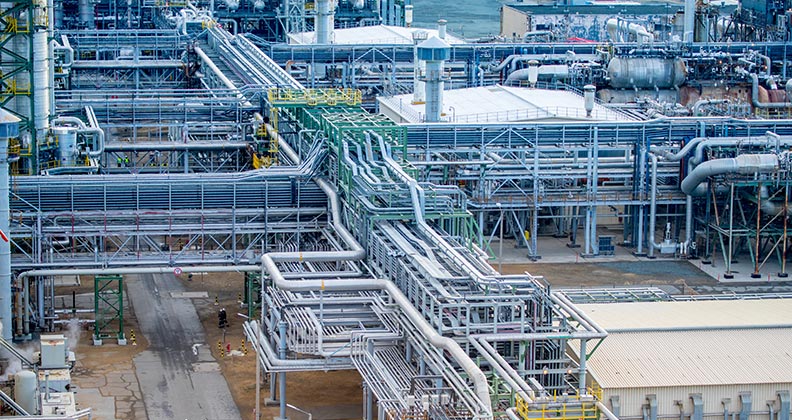
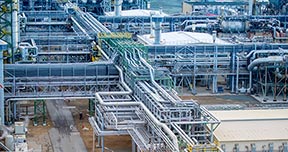
exploration and production
Crude production in 2022 was 361.73 million barrels.
In 2022, KPO produced 128.53 million barrels of oil equivalent. In addition, over 11 billion cubic meters of sour dry gas were injected into the reservoir, a volume equivalent to approximately 57 percent of the total gas produced).
TCO crude production in 2023 was 28.9 million metric tonnes (230.6 million barrels).
tengizchevroil
30
year anniversary in 2023
tengiz oil production
4.5
(564 million metric tonnes)
billions of barrels of oil
FGP – WPMP workforce
30,000+
Kazakhstanis
tengizchevroil looks ahead
Find more about the impressive development of the Tengiz Field.
TCO continues its development of the Tengiz and Korolev crude oil fields in the West Kazakhstan Region,
Throughout the company’s 30-year history, there have been several investments in new production and facilities, as well as in the application of the latest technologies, that have helped TCO to increase production from 1 million metric tonnes of crude oil production annually to approximately 29 million metric tonnes.
The Future Growth Project-Wellhead Pressure Management Project (FGP-WPMP), the next major expansion of the Tengiz oilfield, is a landmark project that created a legacy of a trained skilled workforce, new facilities, technology transfer through partnerships between Kazakhstani and international companies, and upgraded infrastructure in the region.
karachaganak, one of the world’s largest fields
The Karachaganak Field in northwest Kazakhstan is one of the world's largest oil and gas condensate reserves. The field is estimated to contain approximately 60 trillion cubic feet of gas and 13 billion barrels of oil and condensate in place. Chevron has an 18% non-operated working interest in the Karachaganak Petroleum Operating (KPO) joint venture – the largest gas producing venture in Kazakhstan which oversees the expansion and development of the Karachaganak field.
In 2020, the CPC pipeline transported 10.8 million tonnes (85.8 million barrels) of oil from Karachaganak to the port of Novorossiysk on the Black Sea. Product was further transported via the Atyrau-Samara pipeline to the Transneft system for shipment to the port of Ust-Luga on the Baltic Sea.
In 2022, KPO produced 128.53 million barrels of oil equivalent in the form of stable and unstable liquids, sour gas for export and sweet gas for use as fuel. In addition, 10,361.740 Mscm of gas were reinjected into the reservoir, a volume equivalent to approximately 51.3% of the total gas produced.
More than 5,000 Kazakhstani vendors are registered to supply the project, and since 1997 the local content level in all contracts assigned has exceeded $8.58 billion.
Approximately 4,000 people work in Karachaganak Petroleum Operating, with local employees occupying 97% of the venture’s skilled, clerical and professional roles.
Between 1998 and 2021, KPO spent $439 million on social infrastructure projects in West Kazakhstan.
moving product to market via the CPC pipeline
Chevron is the largest private shareholder in the Caspian Pipeline Consortium (CPC). The pipeline runs for 935 miles (1,505 km), exporting crude oil from the Tengiz Field to the Black Sea port of Novorossiysk. More than 90% of the oil transported comes from fields in Kazakhstan.
The Caspian Pipeline provides a key export route for crude oil produced from the Tengiz and Karachaganak fields. In 2020, an average of 1.3 million barrels of crude oil per day passed through the pipeline, which included 1.1 million barrels per day from Kazakhstan and .2 million barrels per day from Russia. More than 7,500 tankers have been loaded since 2001, when the pipeline began transporting oil.
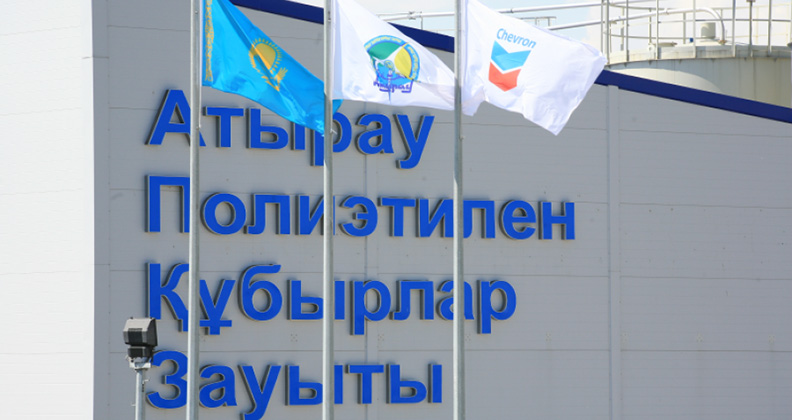
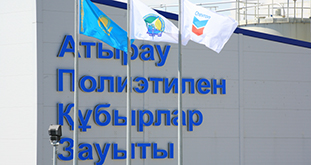
Chevron operates the Atyrau Polyethylene Pipe Plant (APPP), which produces pipes for water, gas, heating and industrial use. The APPP is run entirely by Kazakhstanis.
building on success and diversifying the economy
Chevron Direct Investment Fund Ltd (CDIF)
marketing and retail
Through our authorized distributor, Chevron markets lubricants, coolants and fuel treatments under the Texaco® brand for consumer, commercial and industrial use in Kazakhstan.


in the community
Chevron partners with local communities to enable human progress in three key areas: people, prosperity and environment. Since 1994, Chevron has contributed over $450 million in social investment, initiating more than 300 projects with more than 30 community partners. In 2020 Chevron became one of the first and largest contributors in Kazakhstan to respond to the COVID-19 emergency with over $20 million donation of medicines and equipment.
Chevron contributes to the development of communities through business partnerships in the Tengiz and Karachaganak projects.
tengizchevroil
Since 1993, through its voluntary EGILIK program, TCO has invested in more than 120 social infrastructure projects to construct and improve social facilities such as schools, hospitals, recreational areas, kindergartens, and other common facilities in Atyrau region.
TCO also supported 123 social projects over the years, within its Community Investments Program, focused on improving the wellbeing of communities in the areas of health, education, economic and civil society development in Atyrau and Mangystau oblasts.
karachaganak
We also work with our Karachaganak partners to support the community. Since 1998, KPO has contributed more than $439 million to social infrastructure projects in western Kazakhstan.
kazakhstan community videos

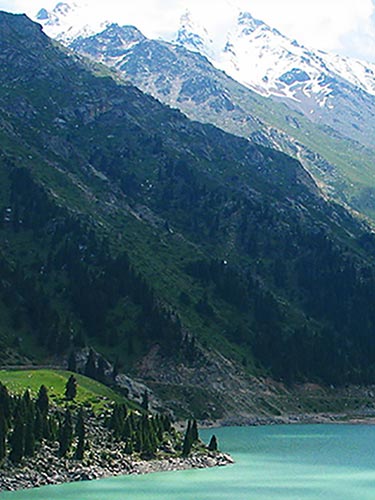
health, environment and safety
Protecting people and the environment is one of Chevron’s core values.
Chevron invests heavily in protecting the environment. Since 2000, TCO invested over $3.2 billion in environmental protection activities. These investments have enabled TCO to achieve reductions in flaring, improve wastewater treatment, increase water reuse, and manage waste safely.


economy
Chevron has been an important job-creation engine for the region, extending far beyond the 2,802 Kazakhstani nationals directly employed. The real story is the multiplier effect of Chevron Kazakhstan’s business activities. For every $1 billion in local spending, 62,000 jobs are supported.
Every Chevron job supports another 33 jobs across the nation’s economy. This includes jobs in professional services, construction, manufacturing, transportation and retail among other industries. The nearly 96,000 people working in jobs supported by Chevron collectively receive an average of $737 million in pay each year.
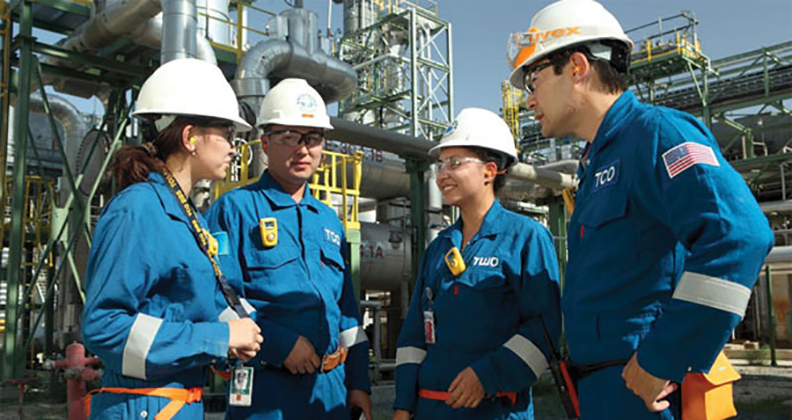
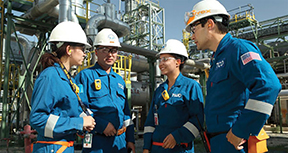
Between 2010 and 2021, on average TCO stimulated 11% of Kazakhstan’s nominal GDP.
Tengizchevroil is playing a leading role in helping to meet the Republic of Kazakhstan’s (RoK) growing demand for gas, in both the countries’ petrochemical industry as well as for domestic needs. TCO supplied the majority of its produced sales gas to the domestic market, and continually provides energy to local residents and industries.
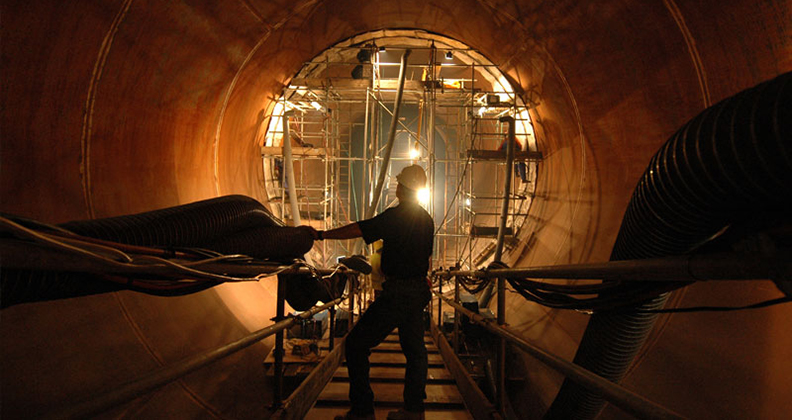
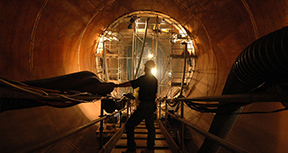
contact
Telephone: +7 727 298 0662
CAUTIONARY STATEMENTS RELEVANT TO FORWARD-LOOKING INFORMATION FOR THE PURPOSE OF “SAFE HARBOR” PROVISIONS OF THE PRIVATE SECURITIES LITIGATION REFORM ACT OF 1995 AND OTHER IMPORTANT LEGAL DISCLAIMERS
This website contains forward-looking images and statements relating to Chevron’s operations and lower carbon strategy that are based on management's current expectations, estimates and projections about the petroleum, chemicals and other energy-related industries. Words or phrases such as “anticipates,” “expects,” “intends,” “plans,” “targets,” “advances,” “commits,” “drives,” “aims,” “forecasts,” “projects,” “believes,” “approaches,” “seeks,” “schedules,” “estimates,” “positions,” “pursues,” “progress,” “may,” “can,” “could,” “should,” “will,” “budgets,” “outlook,” “trends,” “guidance,” “focus,” “on track,” “goals,” “objectives,” “strategies,” “opportunities,” “poised,” “potential,” “ambitions,” “aspires” and similar expressions, and variations or negatives of these words, are intended to identify such forward-looking statements, but not all forward-looking statements include such words. These statements are not guarantees of future performance and are subject to numerous risks, uncertainties and other factors, many of which are beyond the company’s control and are difficult to predict. Therefore, actual outcomes and results may differ materially from what is expressed or forecasted in such forward-looking statements. Our ability to achieve any aspiration, target or objective outlined in this report is subject to numerous risks, many of which are outside of our control. Examples of such risks include: (1) sufficient and substantial advances in technology, including the continuing progress of commercially viable technologies and low- or non-carbon-based energy sources; (2) laws, governmental regulation, policies, and other enabling actions, including the granting of necessary permits by governing authorities; (3) the availability and acceptability of cost-effective, verifiable carbon credits; (4) the availability of suppliers that can meet our sustainability-related standards; (5) evolving regulatory requirements, including changes to IPCC’s Global Warming Potentials, affecting ESG standards or disclosures; (6) evolving standards for tracking and reporting on emissions and emissions reductions and removals; (7) customers’ and consumers’ preferences and use of the company’s products or substitute products; (8) actions taken by the company’s competitors in response to legislation and regulations; and (9) successful negotiations for carbon capture and storage and nature-based solutions. Further, standards of measurement and performance set forth in this report made in reference to our environmental, social, governance, and other sustainability plans and goals may be based on protocols, processes and assumptions that continue to evolve and are subject to change in the future, including due to the impact of future regulation. The reader should not place undue reliance on these forward-looking statements. Unless legally required, Chevron undertakes no obligation to update publicly any forward-looking statements, whether as a result of new information, future events or otherwise.
Among the important factors that could cause actual results to differ materially from those in the forward-looking statements are: changing crude oil and natural gas prices and demand for the company’s products, and production curtailments due to market conditions; crude oil production quotas or other actions that might be imposed by the Organization of Petroleum Exporting Countries and other producing countries; technological advancements; changes to government policies in the countries in which the company operates; public health crises, such as pandemics and epidemics, and any related government policies and actions; disruptions in the company’s global supply chain, including supply chain constraints and escalation of the cost of goods and services; changing economic, regulatory and political environments in the various countries in which the company operates; general domestic and international economic, market and political conditions, including the military conflict between Russia and Ukraine, the war between Israel and Hamas and the global response to these hostilities; changing refining, marketing and chemicals margins; actions of competitors or regulators; timing of exploration expenses; timing of crude oil liftings; the competitiveness of alternate-energy sources or product substitutes; development of large carbon capture and offset markets; the results of operations and financial condition of the company’s suppliers, vendors, partners and equity affiliates; the inability or failure of the company’s joint-venture partners to fund their share of operations and development activities; the potential failure to achieve expected net production from existing and future crude oil and natural gas development projects; potential delays in the development, construction or start-up of planned projects; the potential disruption or interruption of the company’s operations due to war, accidents, political events, civil unrest, severe weather, cyber threats, terrorist acts, or other natural or human causes beyond the company’s control; the potential liability for remedial actions or assessments under existing or future environmental regulations and litigation; significant operational, investment or product changes undertaken or required by existing or future environmental statutes and regulations, including international agreements and national or regional legislation and regulatory measures related to greenhouse gas emissions and climate change; the potential liability resulting from pending or future litigation; the ability to successfully integrate the operations of the company and PDC Energy, Inc. and achieve the anticipated benefits from the transaction, including the expected incremental annual free cash flow; the risk that Hess Corporation (Hess) stockholders do not approve the potential transaction, and the risk that regulatory approvals are not obtained or are obtained subject to conditions that are not anticipated by the company and Hess; potential delays in consummating the transaction, including as a result of regulatory proceedings or the ongoing arbitration proceedings regarding preemptive rights in the Stabroek Block joint operating agreement; risks that such ongoing arbitration is not satisfactorily resolved and the potential transaction fails to be consummated; uncertainties as to whether the potential transaction, if consummated, will achieve its anticipated economic benefits, including as a result of regulatory proceedings and risks associated with third party contracts containing material consent, anti-assignment, transfer or other provisions that may be related to the potential transaction that are not waived or otherwise satisfactorily resolved; the company’s ability to integrate Hess’ operations in a successful manner and in the expected time period; the possibility that any of the anticipated benefits and projected synergies of the potential transaction will not be realized or will not be realized within the expected time period; the company’s future acquisitions or dispositions of assets or shares or the delay or failure of such transactions to close based on required closing conditions; the potential for gains and losses from asset dispositions or impairments; government mandated sales, divestitures, recapitalizations, taxes and tax audits, tariffs, sanctions, changes in fiscal terms or restrictions on scope of company operations; foreign currency movements compared with the U.S. dollar; higher inflation and related impacts; material reductions in corporate liquidity and access to debt markets; changes to the company’s capital allocation strategies; the effects of changed accounting rules under generally accepted accounting principles promulgated by rule-setting bodies; the company’s ability to identify and mitigate the risks and hazards inherent in operating in the global energy industry; and the factors set forth under the heading “Risk Factors” on pages 20 through 26 of the company’s 2023 Annual Report on Form 10-K and in subsequent filings with the U.S. Securities and Exchange Commission. Other unpredictable or unknown factors not discussed on this website could also have material adverse effects on forward-looking statements.
For the latest figures, view the 2023 Supplement to the Annual Report.